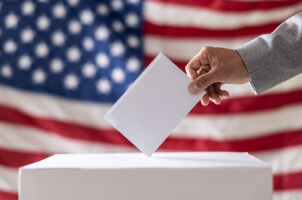Campaign money has migrated online. One-click micro-donations, crowdfunding links and hyper-targeted social ads now build war chests that once relied on ballroom galas and fat checks. The result: fundraising moves at internet speed, small donors wield unexpected clout, and a clever tweet can raise more cash overnight than a month of phone-banking ever did.
The Shift in Campaign Fundraising Methods
Campaign money once flowed from a small circle of big-ticket donors. Today it arrives in $5 bursts from phones across the country, thanks to crowdfunding links and one-click giving on social feeds. Online platforms have pried the gates open, letting first-time supporters bankroll campaigns alongside the traditional power players. Here’s how that shift happened—and why it matters for the next race.

Traditional Fundraising Sources
For decades, campaign cash flowed from a tight circle of deep-pocketed donors—wealthy patrons, PACs and party committees. Their checks steered strategy and set priorities, underwriting the ads, staff and travel a competitive run demands. In short: big money bought a big say in who reached the voters.

Everyday Donors
The digital age flung the campaign gates wide open. Crowdfunding links and social feeds let everyday voters chip in five or ten dollars at a time—tiny sparks that, together, light up a war chest. Those small-dollar waves give campaigns a broader, more engaged donor base and let candidates talk to supporters one-to-one instead of broadcasting from a stage.

Digital Platforms Democratizing Donations
ActBlue and WinRed turned giving into a two-tap affair, converting pocket-size donations into overnight bankrolls. By shrinking the distance between voter and candidate, the platforms loosen the grip of mega-donors and knit supporters into a community where every $10 click counts.
The Rise of Micro-Donations

Small-dollar giving is now the engine of online fundraising. User-friendly portals turn a $5 impulse into instant campaign cash, widening the donor pool far beyond the usual insiders. Supporters feel a tangible stake in the race, while campaigns enjoy a steady drip of money precisely when pressure peaks.
Tap that grassroots energy, and the haul can outstrip what big-ticket patrons once supplied. Mobilizing thousands of micro-donors fattens the war chest and deepens civic engagement, binding supporters into a community with a shared purpose.
Social Media and Fundraising

Facebook, X, Instagram—today’s digital megaphones—also double as campaign cash registers. Campaigns now slice audiences by age, zip code—even a favorite playlist—and attach a donation link that flips curiosity into cash in seconds. Viral shares amplify the pitch, dwarfing the reach of yesterday’s mailing lists. Yet the same velocity that swells coffers can just as quickly bend the truth.
Misinformation—and outright foreign meddling—rides the very channels campaigns rely on, stoking calls for tougher rules and brighter spotlights on who’s paying for every pixel.
Legal and Regulatory Challenges
Regulators are scrambling to keep pace with online money streams. Fundraising sites must follow campaign-finance rules, but oversight is spotty, leaving loopholes for savvy operatives. “Dark money” groups—flush with cash yet anonymous to voters—still thrive in the digital shadows, while data-driven micro-targeting stirs fresh worries about privacy and manipulation. On Capitol Hill and in watchdog circles, fixes are on the table. Some lawmakers want tougher disclosure rules for every online dollar; others push caps on digital-ad spending. The debate isn’t academic—it will shape who can raise what, and how transparently, in the next election cycle.
States are muscling in, too. California now forces every digital ad to plaster its biggest funders right on the screen, while Maryland insists that even viral memes carry the same disclaimers as prime-time TV spots. Washington, New York, and Colorado have adopted similar “name-and-shine” statutes, betting that sunlight can curb shadow spending where Congress has stalled. The Federal Election Commission has floated matching rules for the whole country, but partisan gridlock keeps them bottled up—leaving a patchwork of state laws that savvy operatives can still navigate around.
The Impact on Political Campaigns

Digital money-raising never sleeps. Fund-raisers have ditched ballroom dinners for round-the-clock appeals that ping phones through social feeds, email blasts, text chains, and campaign apps. The candidate who masters that digital drumbeat can refill the coffers overnight—an edge that can decide a tight race.
That shift demands new skills. Campaigns now hire data wonks, ad buyers, and community managers to keep the online machine humming and the cash flowing.
But the digital boom isn’t an equalizer. Well-funded operations armed with sophisticated targeting tools hoover up small-dollar gifts at scale, while under-resourced rivals struggle to break through the noise. The result: technology widens the very funding gap it promised to close.
The Future of Campaign Financing
Tech will keep rewriting the money playbook. Blockchain backers tout a public ledger that could expose every political dollar, while post-pandemic virtual rallies and online fund-raisers look set to outlive the Zoom era.
The ad pipes that make that possible—Facebook, X, YouTube and the rest—now face louder demands to badge every spot and name every buyer. Legislatures are already drafting tougher disclosure rules and spending caps to keep pace with platforms that can raise a million dollars before lunch.
For voters, tracking those digital dollars isn’t trivia; it’s a democracy diagnostic. Knowing who pays, how, and why is the surest way to judge whether the system stays fair and transparent.
Summary
Looking ahead, the very tools that fuel grassroots giving—hyper-targeted ads, AI-crafted messages, even deepfake videos—could just as easily be weaponized to distort debate. Keeping elections open, honest, and equitable will demand sharper scrutiny from regulators, tech platforms, watchdogs, and voters alike, so innovation lifts participation without eroding trust.
Equally vital is a better-armed electorate: digital-literacy programs that teach voters to spot a doctored clip, question a too-perfect pitch, and trace a claim to its source. An informed public is the strongest firewall against high-tech manipulation, ensuring the promise of the online town square outweighs its perils.
Read Articles

Securing U.S. Elections with Modern Voting Technology
Election integrity is democracy’s bedrock. As ballots move onto networked machines and cloud servers, new fault lines appear—aging hardware, weak software, and foreign hackers probing for a way in. The dangers are real, but so is the pushback: engineers harden code, auditors test systems, and watchdogs trace every digital breadcrumb. Knowing how the tech works, where it cracks, and what fixes are underway is the first step toward restoring public trust.
Read More
Global Political Trends and Their Impact on Governance
Politics never stays put. A treaty signed in Tokyo can shake factory floors in Detroit; a protest in Santiago can spark rallies in Seoul. The 21st-century map keeps shifting as domestic pressures collide with global tensions and new models of governance. Tracking those cross-border ripples is the surest way to make sense of a world that feels more tangled—and more connected—by the day.
Read More